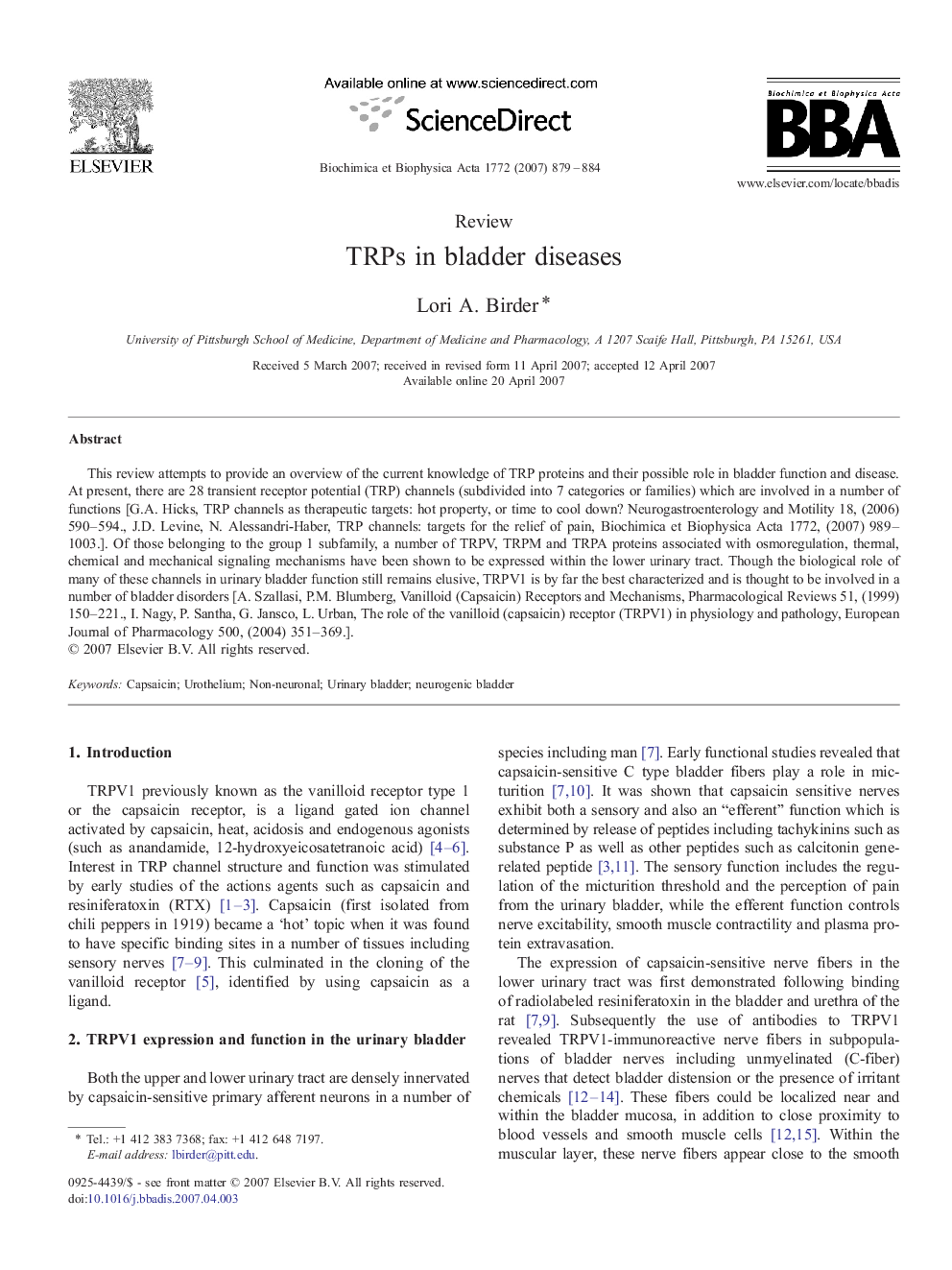| Article ID | Journal | Published Year | Pages | File Type |
|---|---|---|---|---|
| 1905783 | Biochimica et Biophysica Acta (BBA) - Molecular Basis of Disease | 2007 | 6 Pages |
This review attempts to provide an overview of the current knowledge of TRP proteins and their possible role in bladder function and disease. At present, there are 28 transient receptor potential (TRP) channels (subdivided into 7 categories or families) which are involved in a number of functions [G.A. Hicks, TRP channels as therapeutic targets: hot property, or time to cool down? Neurogastroenterology and Motility 18, (2006) 590–594., J.D. Levine, N. Alessandri-Haber, TRP channels: targets for the relief of pain, Biochimica et Biophysica Acta 1772, (2007) 989–1003.]. Of those belonging to the group 1 subfamily, a number of TRPV, TRPM and TRPA proteins associated with osmoregulation, thermal, chemical and mechanical signaling mechanisms have been shown to be expressed within the lower urinary tract. Though the biological role of many of these channels in urinary bladder function still remains elusive, TRPV1 is by far the best characterized and is thought to be involved in a number of bladder disorders [A. Szallasi, P.M. Blumberg, Vanilloid (Capsaicin) Receptors and Mechanisms, Pharmacological Reviews 51, (1999) 150–221., I. Nagy, P. Santha, G. Jansco, L. Urban, The role of the vanilloid (capsaicin) receptor (TRPV1) in physiology and pathology, European Journal of Pharmacology 500, (2004) 351–369.].
